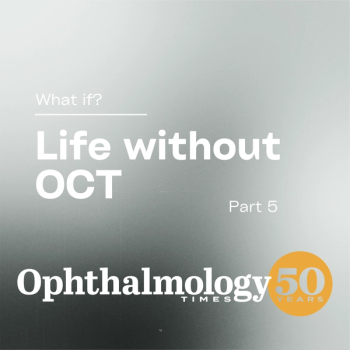
- Ophthalmology Times: February 2023
- Volume 48
- Issue 2
Controlling pain and inflammation associated with cataract surgery
Surgeon notes there is no good solution for ending use of topical medications
Keeping pain and inflammation after cataract surgery to a minimum presents quite a challenge for ophthalmologists.
Denise M. Visco, MD, MBA, noted 2 cataract surgery cases and evaluated different regimens for the management of perioperative inflammation. She is medical director of Eyes of York Cataract and Laser Center, in York, Pennsylvania.
CASE 1: Topical drops and combinations for controlling pain/inflammation
A 68-year-old diabetic patient with cataracts and an unremarkable ocular history (no diabetic retinopathy) underwent routine cataract surgery.
Despite his case being relatively straightforward, there were some concerns associated with the procedure, including impaired wound healing due to diabetes and a higher risk of cystoid macular edema (CME), pupillary miosis, and potential infection, Visco said.
Treatments for postoperative inflammation include intracanalicular dexamethasone and topical, intracameral, and subtenon medications.
The steroid regimens typically used to prevent CME and rebound iritis postoperatively include prednisolone acetate and intracanalicular or intracameral dexamethasone, with topical instillation considered the most effective route for steroid delivery.
According to a recent study by the European Society of Cataract and Refractive Surgeons (ESCRS), a combination of topical steroids and topical nonsteroidal anti-inflammatory drugs (NSAIDs) was most effective at reducing the risk of CME, to about 1.5%,1 Visco noted.
Although no studies have evaluated the triple combination of intracameral phenylephrine-ketorolac against the topical NSAID/steroid duo, studies of phenylephrin3-ketorolac and a topical NSAID alone decreased the CME risk to below 0.5%, she added.
“Combining them with intracameral phenylephrine-ketorolac yielded the lowest risk for CME, rebound iritis, and pain and inflammation with cataract surgery,” Visco said.
A recent prospective study2 evaluated 3 treatments: prednisolone acetate and ketorolac in combination, ketorolac alone, and a subtenon depot of dexamethasone at time of surgery. The latter was found to be inferior to the other protocols, she pointed out, although the study focused only on anterior chamber inflammation.
CASE 2: Topical steroids prevail for now
A 73-year-old patient underwent cataract surgery and minimally invasive glaucoma surgery (MIGS) for primary open-angle glaucoma. The patient, who had vitreomacular traction and a small pupil, wanted a toric intraocular lens for good uncorrected distance vision (cylinder, about 2 diopters against-the-rule astigmatism).
The case presented the following challenges: vitreomacular traction, high CME risk, ocular manipulation with a small pupil, performing MIGS, and elevated patient expectations with a premium procedure.
Per the ESCRS study, the best option for eyes at risk for CME is to start NSAID and steroid drops 2 to 3 days preoperatively.
An investigation by Visco and Bedi of the effectiveness of intracameral phenylephrine-ketorolac during cataract surgery versus that of postoperative topical steroids at reducing postoperative CME, iritis, pain, and photophobia showed that phenylephrine-ketorolac plus topical NSAIDs were more effective than the combination of a topical NSAID and steroid.3
“The combination of the NSAID intracamerally with topical application preoperatively and for 10 weeks postoperatively drove the CME rate down to 0.5% or less,” Visco observed, explaining that CME incidence increases if topical NSAIDs are not used after this surgery.
Visco said that the patient should begin instilla-ion of topical steroids preoperatively and topical NSAID drops 3 days preoperatively, receive intracameral phenylephrine-ketorolac intraoperatively, continue with topical steroids for 4 weeks postoperatively, and then taper—from 4 times to once daily—over the following 4 weeks, for a total of 8 weeks.
“The bottom line in managing pain and inflammation with cataract surgery is that there is no good current solution for ending use of topical medications,” she concluded. “Many physicians are uncomfortable eliminating the topical steroid, despite that incorporation of topical NSAIDs with intracameral phenylephrine-ketorolac results in the lowest rates of CME pain and inflammation after cataract surgery.”
Denise M. Visco, MD, MBA
E: [email protected]
Dr Visco is a speaker and consultant for Ocular Therapeutix and for Omeros, from which she receives research support.
Editor’s note: Reader feedback is the most powerful tool in our arsenal as we prepare content. We want to hear from you. Help shape the content by telling us what you would like to know about this topic in a follow-up article. Send us an email and let us know.
--
References
Wielders LHP, Schouten JSAG, Winkens B, et al. Eu- ropean multicenter trial of the prevention of cystoid macular edema after cataract surgery in nondia- betics: ESCRS PREMED study report 1. J Cataract Refract Surg. 2018;44(4):429-439. doi:10.1016/j. jcrs.2018.01.029
Erichsen JH, Forman J, Holm LM, et al. Effect of anti-inflammatory regimen on early postoperative inflammation after cataract surgery. J Cataract Refract Surg. 2021;47:323-330. doi:10.1097/j. jcrs.0000000000000455
Visco DM, Bedi R. Effect of intracameral phenylephrine 1.0%-ketorolac 0.3% on postop- erative cystoid macular edema, iritis, pain, and photophobia after cataract surgery. J Cataract Refract Surg. 2020;46(6):867-872. doi:10.1097/j. jcrs.0000000000000193
Articles in this issue
over 2 years ago
Restoring vision through RGC repopulation—what needs to happen?over 2 years ago
Keratoconus and perfect vision: Is it possible?over 2 years ago
Customizing patients’ vision with violet light filtrationover 2 years ago
Pigmented lesions on ocular surface require various approachesover 2 years ago
Bascom Palmer Eye Institute touts its master’s programNewsletter
Don’t miss out—get Ophthalmology Times updates on the latest clinical advancements and expert interviews, straight to your inbox.



















































.png)


